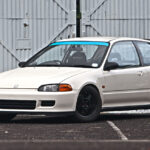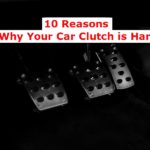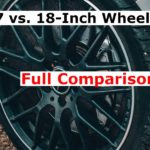Are Subaru Parts Expensive? (with 8 Examples)
The average annual maintenance cost of a Subaru is $617, which puts it above the national average for comparable models. Compared to popular models like Toyota and Honda, Subaru sales only make up 3% of the market. However, many consumers who have purchased a Subaru say that it’s the best automobile they’ve ever owned.
Many even say the reliability, performance, comfort, and safety are on a luxury-car level. Another point in this brand’s favor is the standard AWD with their cars. Subarus still require repairs, and the question remains, are Subaru parts expensive? Keep reading further to determine if Subaru parts are more expensive than aftermarket parts?
Are Subaru Parts Expensive?
Essentially, Subaru parts are costly compared to aftermarket varieties from other manufacturers. For instance, OEM rotors for a 2020 Subaru Outback from the dealership cost $89.95; an aftermarket OE on the Parts Geek website would be $41.43.
It is not uncommon for dealership parts to be more expensive than aftermarket parts, especially since few dealerships or manufacturers are available.
Who Supplies Parts to Subaru?
The Subaru brand has its manufacturing center overseas in Ota, Japan; some of Subaru’s cars are assembled in Indiana. So, OEM parts from Subaru are usually your best bet. Their unlimited mile/one-year warranty protects their Genuine Subaru replacement parts.
However, because of the small car company’s limited manufacturing bases, Subaru parts may be challenging to find and, therefore, be more expensive than comparable car brand parts or aftermarkets.
Also read: Are Subarus Reliable? Which Subarus aren’t?
Brake Pads
Brake Pads stop the vehicle’s motion by using hydraulic pressure to clamp down the rotors. This action creates heat and friction, which slows the car. Brake pads are made of organic material, semi-metallic compounds, or ceramic.
Brake pads should be replaced every 25,000-70,000 miles, depending on your driving habits. A mechanic should inspect the braking system to check the friction material left on your Subaru’s brakes. This is also an excellent time to check on the condition of your rotors; however, Subaru recommends changing them every 35,000 miles.
The table below describes how much brake pads cost.
| OEM (GM) | Carquest Premium Gold | Carquest Professional Plat. | |
| (NEW) | $79.95 | $64.99 | $52.99 |
| (USED) | $39.97 | $32.49 | $26.49 |
I choose Subaru brake pads since they are high-quality OEM parts that can be any variety you choose based on your driving needs. I would advise getting semi-metallic, which is less expensive, wears down slower and is less likely to warp the rotor.
OEM brakes are great for general usage, are quiet and effective on the road, and are long-lasting. However, aftermarket brake pads will stop better, last longer, cost less, and be better suited for your driving style.
If aftermarket is what you’re after, I suggest the Carquest Premium. Mechanics will typically charge $95 to replace the brakes for you. However, I recommend changing the brakes on your own.
Filters
Your Subaru uses a method of combustion to create engine power, but it needs a clean mixture of fuel and air to do so. That is where filters come into play.
- Air Filters – These filters can come in various shapes and sizes of cotton, foam, or synthetic paper. The pleated material in the filters keeps dust, insects, or other debris from entering the engine. Subaru recommends changing them every 15,000-30,000 unless driving conditions are hazardous.
- Oil Filters – These filters keep a continuous flow of oil throughout the engine and filter out the dust and metallic particles. It’s safe to replace these every 5,000-7,000 in Subarus.
- Fuel Filters – These filters remove harmful impurities like dust, grit, and rust from the fuel you add to your vehicle. It’s common for the fuel filters to last the car’s life. For example, it’s a good idea to change them every 40,000-80,000 miles in Subarus.
I don’t recommend buying used filters because of their diminished quality.
| OEM | Carquest Premium | Fram Force | Carquest Premium | K & N | Purolator ONE | |
| Air Filters | $23.95 | $22.49 | N/A | N/A | N/A | N/A |
| Oil Filters | $7.98 | $10.99 | $10.59 | $10.99 | $16.99 | $10.99 |
| Fuel Filters | $28.42 | $20.99 | N/A | N/A | N/A | N/A |
I would purchase Subaru parts for the fuel filters. Usually, aftermarket air filters and oil filters are sufficient replacements. So, Purolator, Fram, and K & N are quality brands to buy. Searching on CariD.com or Subaru part outlet websites should help you find OEM parts cheaper.
Mechanics will charge you $95 to change your air filter, approximately $70 for oil changes, and $95 to replace your fuel filter. You can do most of these independently, although I would hire a mechanic to work on the fuel filter unless you have the right tools.
Usually, you can gain access to a Subaru fuel filter by lifting the backseat. The panel beneath it reveals the gas tank, and the fuel filter is located on top of the fuel pump.
Also read: Subaru: Which Model Hold the Most Value?
Battery
The car battery starts the engine and provides power to various electronics such as lights and radio. There are two types of batteries:
- Standard wet-cell – these batteries are known as conventional batteries. They can vent gas and leak acid. These batteries usually have caps to add fluid.
- Absorbed Glass Mat – these batteries are best known for short recharge periods and handling harsher climates. However, they can go for more extended periods of disuse as well.
Trending Video: How to Easily Bring Back to Life any Old Car Battery and Save Tons of Money (click to watch)
I’ve included a table below that describes the pricing for batteries. Before buying a used battery, do some research, and see the battery in person. Corrosion on the terminals is a problem. Also, don’t overlook the date stamp.
I would also check if the salvage yard offers a warranty with the used battery to save you a headache.
| Duralast | Duralast Gold | Diehard Plat. AGM | Duralast Platinum EFB | |
| (NEW) | $159.99 | $189.99 | $231.99 | $209.99 |
| (USED) | $79.99 | $94.99 | $115.99 | $104.99 |
Car batteries usually only last about three to five years; I would go with the Diehard Platinum AGM since these types of batteries could last longer in your Subaru.
A mechanic will charge $95 to replace your battery; I advise doing this yourself. Searching on CariD.com or Subaru outlets should help you find OEM parts cheaper, but batteries for this make aren’t any more expensive than most.
Also read: Are Subarus Expensive to Fix? 7 Questions Answered
Starter and Alternator
Your Starter is an electrical motor that requires a fully charged battery to start your car. The Alternator regulates the electrical energy flowing through the engine and charges the battery.
These parts work in sync and are tricky to diagnose. I’ve included a table below describing the costs.
| Subaru | Carquest Premium | Carquest HD | |
| (NEW) Starter | $365.35 | $159.99 | $250.99 |
| (USED) Starter | $182.67 | $79.99 | $125.49 |
| (NEW) Alternator | $670.07 | $383.99 | $240.99 |
| (USED) Alternator | $335.03 | $191.99 | $120.49 |
Starters and Alternators can last approximately 75,000-125,000 miles on your Subaru depending on driving and environmental conditions. A mechanic will typically charge $140 to replace your Starter and $200 for the Alternator.
I would hire a mechanic to perform these repairs since Subaru engines are more complicated than comparable models. Searching on CariD.com or Advance Auto Parts may yield cheaper options for aftermarket parts.
Generally, I would advise using OEM parts for Starters and Alternators. Subaru provides a one-year warranty for their genuine parts, and their parts will match the specifications of your model.
Spark Plugs
Essentially, spark plugs supply a spark of electricity that causes the air/fuel mixture to ignite. The spark plugs must be up to your vehicle’s specifications because they operate continuously.
I have included a table below describing the cost of spark plugs. Don’t buy used spark plugs as the conditions vary, and new ones are not expensive.
| Per plug | Subaru | NGK Racing | Champion Racing | Champion Racing Plus |
| (NEW) | $17.50 | $4.79 | $3.79 | $3.79 |
I recommend changing your spark plugs every 30,000 miles in your Subaru especially if you’re using the OEM variety. A qualified Subaru technician will recommend that you change them at 60,000 fresh from the dealer and then 30,000 after that.
If you notice rough idling or engine misfires, change them sooner. Bad spark plugs can drain your battery; however, higher-grade spark plugs may not need to be changed as often. You don’t need a mechanic to charge you $135 to change your spark plugs; it’s a safe job, but it can be time-consuming, hence the high labor cost. I still recommend getting NGK because they will last longer.
Timing Chain
A timing chain is significant in your Subaru’s combustion engine. The timing belt essentially coordinates the opening and closing of the valves. To do this, technicians must synchronize the crankshaft and the camshaft; if successful, this will keep the pistons from hitting the valves. This action is controlled by gears, which the timing chain runs over.
Over time it is subjected to intense wear; however, misuse of your vehicle can shorten the timing chain’s lifespan. Going too long between oil changes and even using the wrong oil viscosity can cause timing chain pins and plates to wear.
It’s best to allow your dealership or a trusted mechanic to replace it for you. I would not DIY this job unless you have training. Unfortunately, this is an expensive and time-consuming repair; and many mechanics are not qualified to work on a Subaru. This will most likely be a dealership job. So, you could pay $860-1,000 for labor and an estimated $900 for the timing chain and gears.
Also read: 3 Subaru Engines to Avoid (They Will Ruin You)
Water Pump
Usually, a belt-driven pump receives power from the crankshaft. When the car is in motion, the pump draws cooled antifreeze from the radiator, through the engine, and eventually back into the cooling system.
Below I’ve included a table for various pricing on water pumps.
| OEM | Carquest Premium | Gates | |
| Cost | $149.15 | $142.99 | $336.19 |
Generally, water pumps last 60,000-120,000 miles before you should replace them. A mechanic will typically charge $165 to change your water pump due to its location and the complexity of Subaru engines.
A water pump is an essential part of your Subaru’s engine cooling system; with that in mind, I would purchase a Subaru or Gates replacement part. Surprisingly, Subaru water pumps are not an expensive part to replace.
Without a properly functioning water pump, the engine will overheat, which will lead to leaks, blown head gaskets, damage to serpentine and timing belts, and even a failed motor.
What are the Most And Least Reliable Subarus?
Subaru offers nine cars in its current lineup, whereas comparable companies like Toyota and Ford offer a range in the thirties. With that said, Consumer Reports ranked Subaru fair in 2021 but still ranked above Toyota, Honda, and Lexus. Generally, Outback, Forester, Crosstrek, Legacy, and Impreza are the models that stand out for consumers.
However, the Crosstrek and the Forester are the fan favorites and have higher reliability scores than the rest of Subaru’s lineup.
- Crosstrek ($22,000-$35,000) – Has a reliability score of 78 and delivers great fuel economy (29-MPG) for a small SUV. It has impressive ride comfort and has a powerful engine. An affordable model that also has high safety and driver-assistance ratings.
- Forester ($25,000-$35,000) – This model has a reliability score of 77 and compares with the Crosstrek in terms of reliability, safety, and fuel economy. It’s also a compact SUV that boasts quite a bit more room than the Crosstrek. It delivers (28-MPG) and handles extremely well on and off the road.
Unfortunately, Subaru didn’t have a great year with their newest Ascent model. Since its inception, the vehicle has been plagued with rampant recalls. In this same 2021 Consumer Report, Ascent brought the small car company from fifth to eighth in overall reliability.
In terms of its reliability scores, Consumer Reports gave it a 2 out of 5 for 2021, 2020, and 2019. Among its poor performance in the market, it was plagued with several other issues:
- Transmission problems
- Defective PCV valves
- Loose Driveshaft bolts
- Missing spot welds
- Faulty fuel pumps
If that wasn’t bad enough, the Ascent also suffered several common complaints that left consumers regretting their purchase.
- Open Tailgate drained the battery
- Windshields that crack easily
- Failure to Start
Subaru Alternative
If you’re looking for something with comparable value to a Subaru, then perhaps you should consider these affordable alternatives, see the table below.
| Vehicle | Chevy Equinox | Toyota RAV4 | Mazda CX-5 | Subaru Forester |
| Price | $23,800-$31,400 | $26,350-$42,600 | $25,900-$38,650 | $25,845-$35,945 |
| MPG (Combined) | 28 | 33 | 28 | 29 |
Conclusion
Subaru parts are more expensive than aftermarket parts. Although there aren’t many aftermarket parts available in the market, it’s still better to research thoroughly to ensure fitment and quality. Therefore, I suggest choosing aftermarkets for batteries, brake pads, filters, spark plugs, and tires.
Generally, you should inspect used parts with a fine-tooth comb; you do not want to compromise Subaru’s quality. In addition, it’s essential to select Subaru parts for starters, alternators, timing chains, and water pumps because of how crucial these parts are to other systems. Unfortunately, due to Subaru’s manufacturing situation, the automaker’s parts come from Japan and therefore are more expensive.
While it would be easy to debate this, choosing OEM or aftermarket parts comes down to risk and reward. Often, you are rewarded with reliability and quality when selecting OEM, but the same can be true for quality aftermarket parts. In Subaru’s case, you may be taking a higher risk because of the complexity of this automaker’s engines.
Consulting reputable automotive websites may yield hidden discounts on OEM parts that dealers will not offer you. It’s important to consider all options when purchasing replacement parts.
References:
Subaru Repair: Service and Maintenance Cost, Are Subaru Repairs Too Expensive for Drivers? – autopom!, https://parts.subaru.com/p/, 20 2020 Subaru Outback Brake Rotor – Brake – API, Beck Arnley, CARQUEST, Centric, DuraGo, Dynamic Friction, Genuine, Rear, Rear Left, Rear Right – PartsGeek, Authorized Genuine Subaru Replacement Parts and Accessories Limited Warranty, 10 Things We Learned About Who Really Made Your Subaru, When to Change Your Brake Pads, Subaru Outback Brake Pad Replacement Costs, https://parts.subaru.com/, https://shop.advanceautoparts.com/web/, https://parts.subaru.com/productSearch, Subaru Outback Car Air Filter Replacement Costs,https://shop.advanceautoparts.com/web, https://parts.subaru.com/, Subaru Outback Car Battery, Subaru Outback Car Battery Replacement Costs,Battery – Advance Auto Parts, Starter Replacement Cost – RepairPal Estimate, https://shop.advanceautoparts.com/web/, https://parts.subaru.com/
https://parts.subaru.com/productSearch.aspx, Subaru Outback Spark Plug Replacement Costs, Subaru Outback Timing Chain Replacement | Cost & Service | RepairSmith, https://www.justtires.com/en-US/tires/search/2020_Subaru_Outback_Limited-XT, https://www.goodyear.com/en-US/tire, Tires for 2020 Subaru Outback Limited XT |, https://parts.subaru.com/p/Subaru_2021_Outback/Engine-Water-Pump, https://shop.advanceautoparts.com/web/, Subaru Outback Water Pump Replacement Costs,Subaru Reliability – The Most Reliable And Least Reliable Years And Models | Torque News, Subaru’s Overall Brand Reliability Score Was Dragged Down by 1 Model, Subaru Crosstrek – Consumer Reports, 2022 Subaru Crosstrek Review, Pricing, and Specs, Subaru Forester – Consumer Reports, 2022 Subaru Forester Prices, Reviews, & Pictures | US News & World Report, Skip the Subaru Forester and Choose One of These Alternatives Instead, 2021 Toyota RAV4 Reviews, Pricing & Specs | Kelley Blue Book, 2022 Mazda CX-5: Pricing and Packaging,






